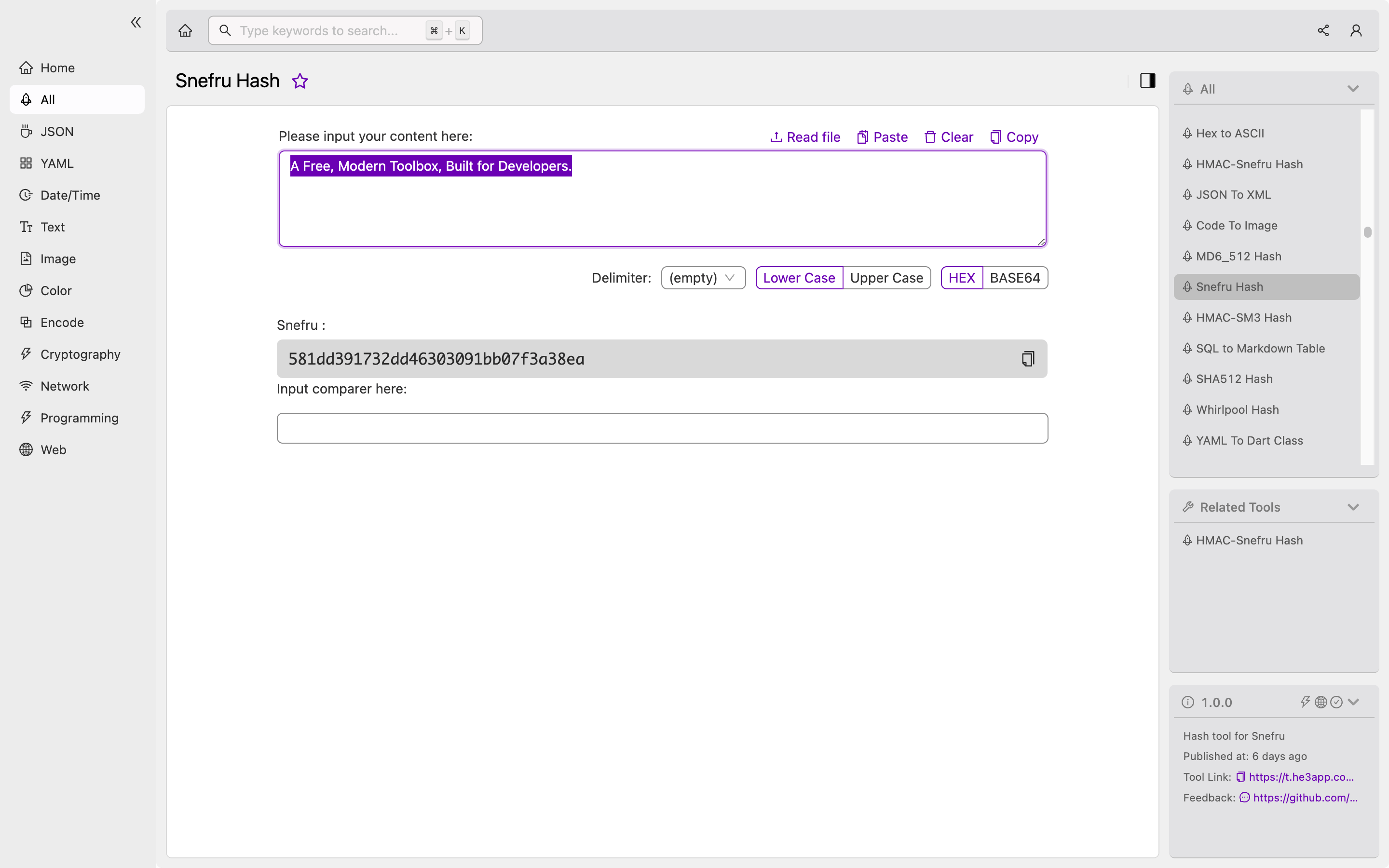Introduction
Cryptographic hash functions are fundamental tools of modern cryptography, used for securing data, authentication, and digital signatures. Snefru Hash is one such popular hash function that has stood the test of time. In this article, we will explore the concept of Snefru Hash, how it works, key features, and scenarios for developers.
What is Snefru Hash?
Snefru Hash is a cryptographic hash function developed by Ralph Merkle and Ronald Rivest in 1990. It is named after an ancient Egyptian pharaoh, Sneferu, who was known for his innovative building techniques. Snefru Hash uses a one-way compression function to convert an input message of arbitrary length into a fixed-size hash value of 128 or 256 bits.
How does Snefru Hash work?
Snefru Hash works by applying successive rounds of a compression function to the input message, which gradually reduces the length and complexity of the message. The compression function uses a combination of bitwise operations, modular arithmetic, and lookup tables to transform the input data. The process continues until the message is reduced to a fixed-size output hash value.
Below is an example C# code for computing the Snefru Hash value of a given string:
using System.Security.Cryptography;
using System.Text;
public static string ComputeSnefruHash(string input)
{
byte[] bytes = Encoding.UTF8.GetBytes(input);
using (var snefru = new SnefruHash())
{
byte[] hashValue = snefru.ComputeHash(bytes);
return BitConverter.ToString(hashValue).Replace("-", "");
}
}Scenarios of Using Snefru Hash for Developers
Snefru Hash can be used in a wide range of applications, such as password storage, digital signatures, message authentication, and data integrity checks. Developers can use Snefru Hash in conjunction with other cryptographic algorithms to provide a robust security mechanism for their applications. For example, Snefru Hash can be used with symmetric encryption algorithms like AES or with asymmetric encryption algorithms like RSA.
Key Features of Snefru Hash
Snefru Hash has several key features that make it a popular choice among developers for secure hashing:
- One-way function: Snefru Hash is designed to be a one-way function, meaning it is practically impossible to determine the original message from the hash value.
- Collision resistance: Snefru Hash is designed to be collision-resistant, meaning it is practically impossible to find two different messages that result in the same hash value.
- Fixed output size: Snefru Hash generates a fixed-length output hash value of 128 or 256 bits, which makes it suitable for use in digital signatures and data authentication.
Misconceptions and FAQs
Like any other cryptographic algorithm, Snefru Hash has some misconceptions and FAQs. Below are two common misconceptions and FAQs:
Misconception 1: Snefru Hash is vulnerable to brute-force attacks.
Explanation: While Snefru Hash has some weaknesses, it is still considered a secure cryptographic algorithm. It is resistant to most known attacks, including brute-force attacks, provided that an appropriate hash value size is used.
Misconception 2: Snefru Hash is obsolete and should not be used.
Explanation: Snefru Hash is an old cryptographic algorithm, but it is still considered secure and used in various applications. The newer hash functions like SHA-3 and BLAKE2 may offer better performance and security, but Snefru Hash is still a good choice in some scenarios.
Conclusion
In conclusion, Snefru Hash is a popular cryptographic hash function used for securing data, authentication, and digital signatures. We have explored the concept, features, and scenarios of using Snefru Hash for developers. To use Snefru Hash, developers can use various programming libraries or tools like He3 Toolbox (https://t.he3app.com?wpg3), which provides a user-friendly interface for computing hash values.

References:
